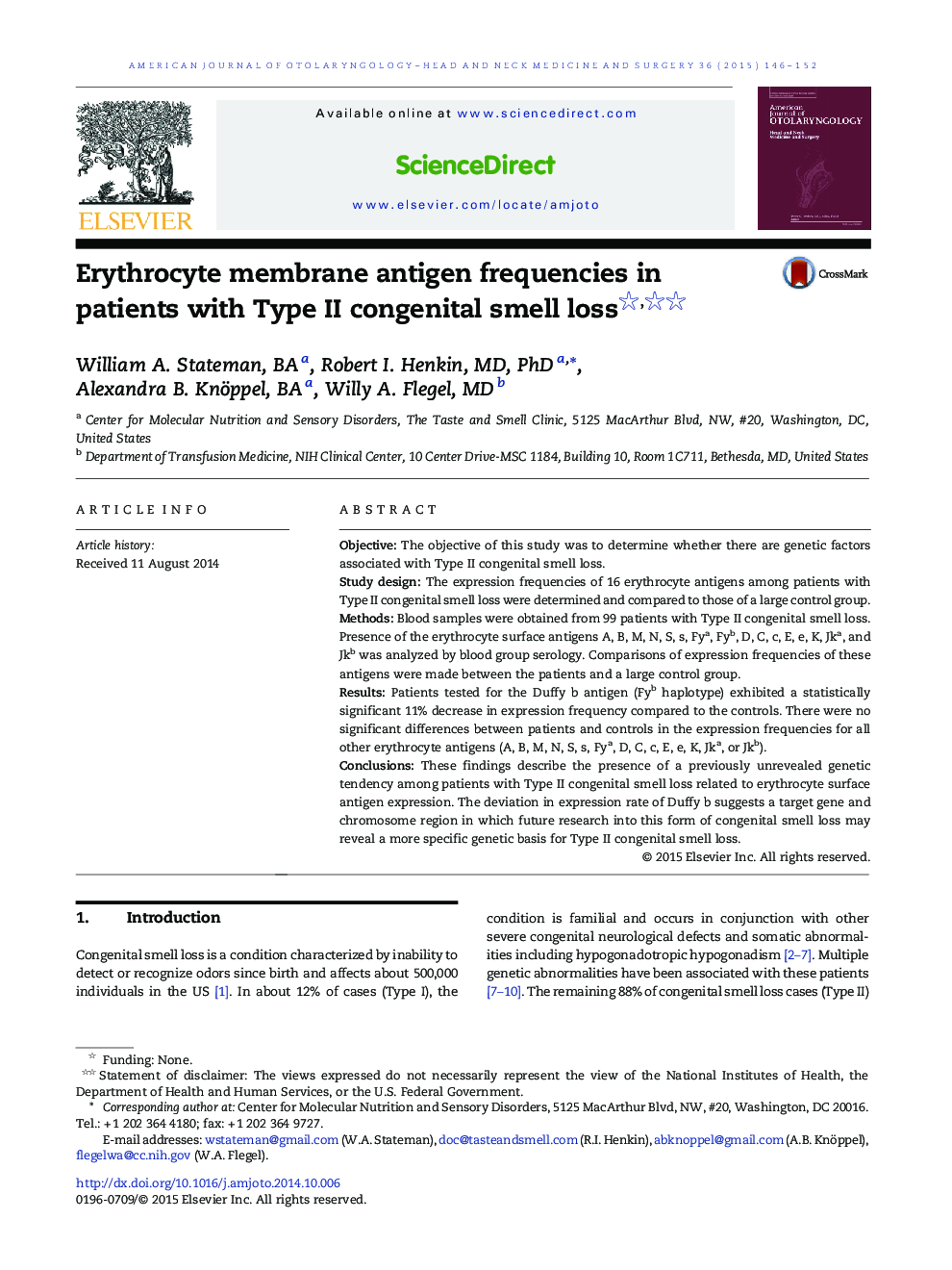| Article ID | Journal | Published Year | Pages | File Type |
|---|---|---|---|---|
| 4103187 | American Journal of Otolaryngology | 2015 | 7 Pages |
ObjectiveThe objective of this study was to determine whether there are genetic factors associated with Type II congenital smell loss.Study designThe expression frequencies of 16 erythrocyte antigens among patients with Type II congenital smell loss were determined and compared to those of a large control group.MethodsBlood samples were obtained from 99 patients with Type II congenital smell loss. Presence of the erythrocyte surface antigens A, B, M, N, S, s, Fya, Fyb, D, C, c, E, e, K, Jka, and Jkb was analyzed by blood group serology. Comparisons of expression frequencies of these antigens were made between the patients and a large control group.ResultsPatients tested for the Duffy b antigen (Fyb haplotype) exhibited a statistically significant 11% decrease in expression frequency compared to the controls. There were no significant differences between patients and controls in the expression frequencies for all other erythrocyte antigens (A, B, M, N, S, s, Fya, D, C, c, E, e, K, Jka, or Jkb).ConclusionsThese findings describe the presence of a previously unrevealed genetic tendency among patients with Type II congenital smell loss related to erythrocyte surface antigen expression. The deviation in expression rate of Duffy b suggests a target gene and chromosome region in which future research into this form of congenital smell loss may reveal a more specific genetic basis for Type II congenital smell loss.
